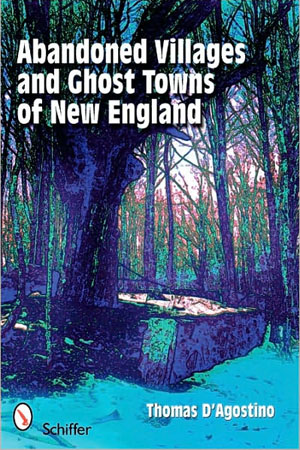 Imagine my excitement at discovering a book titled Abandoned Villages and Ghost Towns of New England at my local bookstore. Finally! I thought: a solid regional history of the places I stumble upon during my wanderings, terrestrial and nautical.
Imagine my excitement at discovering a book titled Abandoned Villages and Ghost Towns of New England at my local bookstore. Finally! I thought: a solid regional history of the places I stumble upon during my wanderings, terrestrial and nautical.
Then imagine my disappointment upon bringing it home to discover it full of prose such as this:
As we traverse overgrown trails that were once well worn with life, it becomes clear these forsaken hamlets had similar ends even though no two settlements were completely alike. Their history and people are often all but forgotten in the shuffle of time and evolution. This could be one reason why many of them are haunted.
Ah, fiddlesticks. What I had believed to be a historical touring guide is instead a collection of Weird NJ hokum, 200 pages of Halloween-store plastic and polyester in lieu of actual archival work. Worse still, the mistake was my own fault: if I had only glanced at the bibliography before lining up at the register, I would have seen most of the sources are either other fiction collections by D’Agostino or spooky storybooks similar to his.
There are lots of photos and a few maps, and Abandoned Villages is best when D’Agostino steps out of the picture completely, like when he quotes at length newspaper articles about the flooding of Flagstaff, Maine. But D’Agostino gives the impression he didn’t do much original research himself, and whatever factual evidence he presents is immediately ruined with personal asides about curses and fluctuations in his EMF meters.
Abandoned Villages is the literary equivalent of a ghost-hunting television show: 10 percent history diluted by 90 percent green night-vision. If you’re interested in any of the towns listed in the table of contents, my advice is to contact the historical society or government agency D’Agostino posts at the end of each chapter and proceed on your own from there.